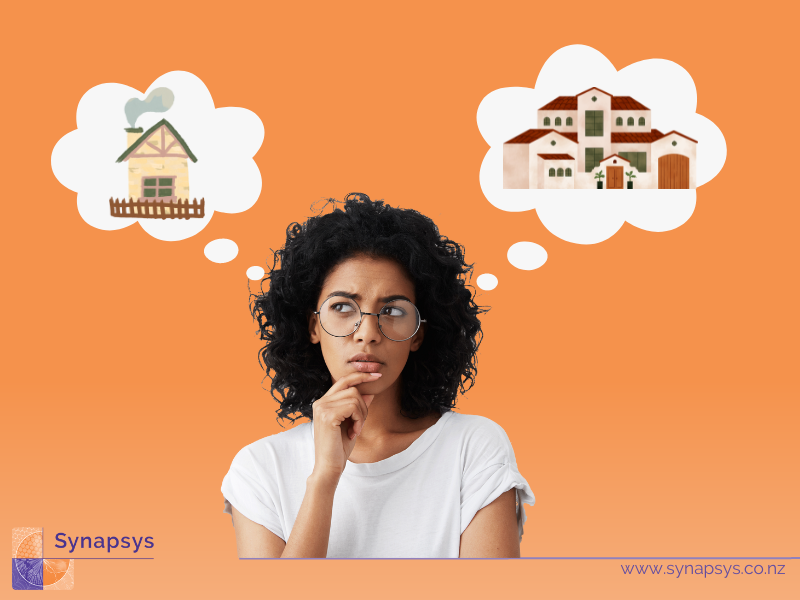
The thing about learning objectives is that they can be compared to designing a house. Just as you need to know the specific requirements of a person when building a house, you also need to understand the needs of learners when defining learning objectives.
For instance, consider a family with three children, who are always busy and require space for a trampoline in the backyard. In this case, a large kitchen would be necessary to accommodate their extended family and guests. On the other hand, a single person in their 60s might not need a big garden, but would prioritise accessibility to ensure long-term comfort.
When planning a house, it’s important to determine its intended duration. Is it a temporary structure for a seasonal event, like a tent, or a family home expected to last for a hundred years? Similarly, learning objectives for e-learning modules and other learning solutions should take into consideration its planned application and length of time involved.
To develop effective learning resources, it is crucial to understand the desired outcomes at the beginning of each project. This involves thoroughly exploring the use case, identifying the target audience, and assessing their specific learning needs. Like in our house metaphor, it’s essential to consider the long-term requirements of the entire family, as well as looking at the long-term goals of the entire organisation, rather than solely focusing on individual needs.
Just as building a house requires foresight, learning objectives should also anticipate future needs. For example, if a young couple with a plan to expand their family, designing a three-bedroom house from the start is more efficient than adding rooms later. Similarly, learning objectives should align with both the present and future requirements of the audience.
Taking the time to understand the complete scope of a project’s learning needs and objectives helps prevent surprises and ensures the development team’s alignment. This is comparable to how builders must thoroughly understand an architect’s blueprints before constructing a house.
In the learning design process, we emphasise the importance of a thorough audience analysis and clearly defined learning objectives. Even if clients believe they have already conducted a learning needs analysis, we make sure to revisit and align our understanding. This ensures that our development team comprehends the objectives, in the same way that builders need to fully grasp the architect’s blueprint.
Additionally, we create a sketch or blueprint of the entire learning solution, whether it’s a module, workshop, or a more complex project. This visual representation helps the team envision the final outcome and ensures everyone is on the same page. Just like builders having a clear vision of the house, this approach helps us maintain focus and clarity throughout the development process.
Once we understand the learning objectives and needs, we create a specification document that helps bring the development team together, ensuring a shared understanding of what is being created, why it is important, and who it is intended for. This collaborative approach maximises the effectiveness of the learning solution.
Feeling inspired to build some exciting learning experiences together?
Our team would love to talk to you!
